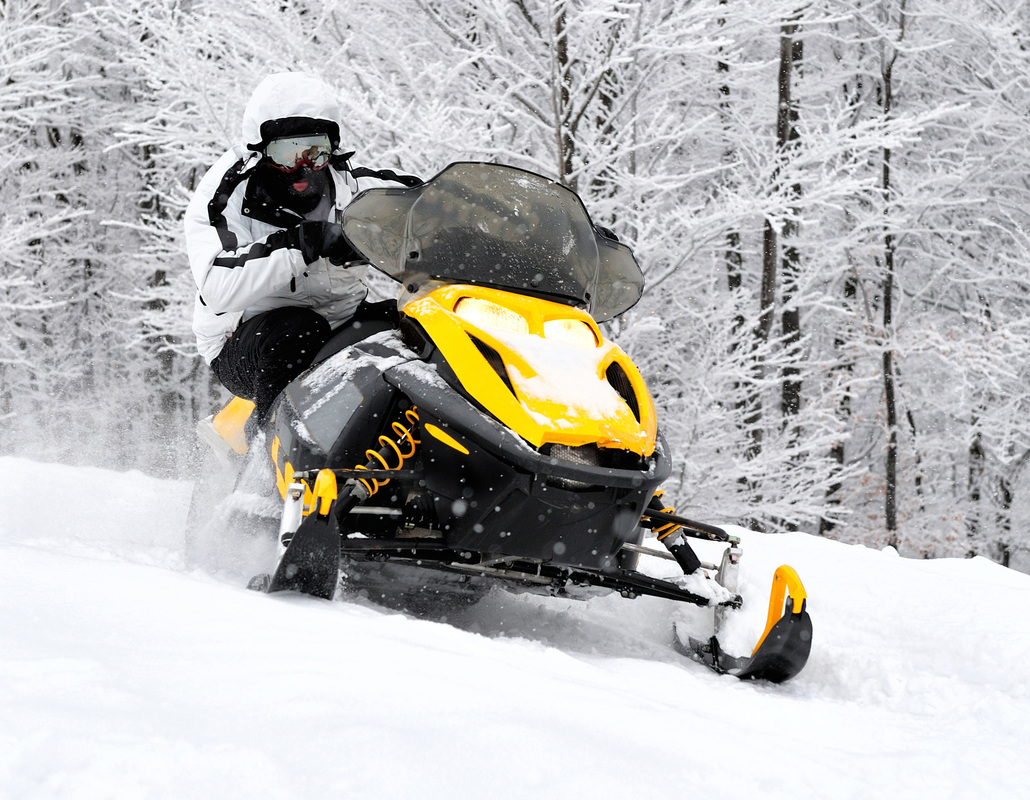Tips to stay safe during snowmobile season
If you live or vacation where the weather gets cold and the snow starts falling, some people are content to cozy up next to the fire with a good book and concentrate on staying warm.
For others, though, it’s time to get excited — because it’s time to break out the snowmobiles and head to the nearest winter recreation spot. It’s a popular activity, and for good reason: Snowmobiling allows you to explore natural areas that may be hard to access by foot (or snowshoe), and provides a different kind of excitement than skiing or hiking.
Of course, snowmobiling presents some dangers as well. And here at Sandvik Insurance Agency, we want you to make it home safely after your day in the snow. Read on for safety tips from the American Council of Snowmobile Associations — and keep in mind that following these will not only help you stay safe, but also influence equitable treatment of snowmobile access by government, agencies and landowners.
SPEED: Speed is a major factor in many snowmobile crashes. Always keep your speed slow enough to ensure that you’re in control.
ALCOHOL: Use of alcohol or any other drug that causes impairment is a leading cause of snowmobile-related fatalities. It’s best to refrain from any use at all before and during outings because of potential effects on vision, reaction time, balance and coordination. When combined with excess speed in particular, the results can be deadly.
AVALANCHE: More than 90 percent of the time, avalanches that involve people are triggered by the victims. Learn to follow avalanche safety procedures and always know the risks at all times.
RIDING AT NIGHT: Nighttime snowmobiling is fun, but extra caution should be used. Ride at slower speeds so as not to override your headlights (which generally illuminate your path for about 200 feet). Faster speeds could mean that you have little or no time to react to an obstacle in your path.
ROADWAYS: Always keep an eye out for vehicles, as many trails are located alongside roadways and can cross over them. Be sure to stop fully at all stop signs and unmarked road crossings.
CLOSED AREAS: Areas may be closed to snowmobiles due to hazardous conditions, wintering wildlife, non-motorized recreation or by landowner request. It’s important to honor these closures for safety purposes and to help protect access to other riding areas.
While it’s extremely important to follow these tips for your personal safety, it’s also vital to encourage others to snowmobile safely as well. Helping to educate others will not only promote safety for all snowmobilers, but also protect the sport’s image as well.
Whether you’re a new rider or have been on the trails for years, ask yourself if you could be riding more safely. There are many more winters to come, and we want you to be able to enjoy as many of them as possible!
If you live or vacation where the weather gets cold and the snow starts falling, some people are content to cozy up next to the fire with a good book and concentrate on staying warm.
For others, though, it’s time to get excited — because it’s time to break out the snowmobiles and head to the nearest winter recreation spot. It’s a popular activity, and for good reason: Snowmobiling allows you to explore natural areas that may be hard to access by foot (or snowshoe), and provides a different kind of excitement than skiing or hiking.
Of course, snowmobiling presents some dangers as well. And here at Sandvik Insurance Agency, we want you to make it home safely after your day in the snow. Read on for safety tips from the American Council of Snowmobile Associations — and keep in mind that following these will not only help you stay safe, but also influence equitable treatment of snowmobile access by government, agencies and landowners.
SPEED: Speed is a major factor in many snowmobile crashes. Always keep your speed slow enough to ensure that you’re in control.
ALCOHOL: Use of alcohol or any other drug that causes impairment is a leading cause of snowmobile-related fatalities. It’s best to refrain from any use at all before and during outings because of potential effects on vision, reaction time, balance and coordination. When combined with excess speed in particular, the results can be deadly.
AVALANCHE: More than 90 percent of the time, avalanches that involve people are triggered by the victims. Learn to follow avalanche safety procedures and always know the risks at all times.
RIDING AT NIGHT: Nighttime snowmobiling is fun, but extra caution should be used. Ride at slower speeds so as not to override your headlights (which generally illuminate your path for about 200 feet). Faster speeds could mean that you have little or no time to react to an obstacle in your path.
ROADWAYS: Always keep an eye out for vehicles, as many trails are located alongside roadways and can cross over them. Be sure to stop fully at all stop signs and unmarked road crossings.
CLOSED AREAS: Areas may be closed to snowmobiles due to hazardous conditions, wintering wildlife, non-motorized recreation or by landowner request. It’s important to honor these closures for safety purposes and to help protect access to other riding areas.
While it’s extremely important to follow these tips for your personal safety, it’s also vital to encourage others to snowmobile safely as well. Helping to educate others will not only promote safety for all snowmobilers, but also protect the sport’s image as well.
Whether you’re a new rider or have been on the trails for years, ask yourself if you could be riding more safely. There are many more winters to come, and we want you to be able to enjoy as many of them as possible!


 RSS Feed
RSS Feed
